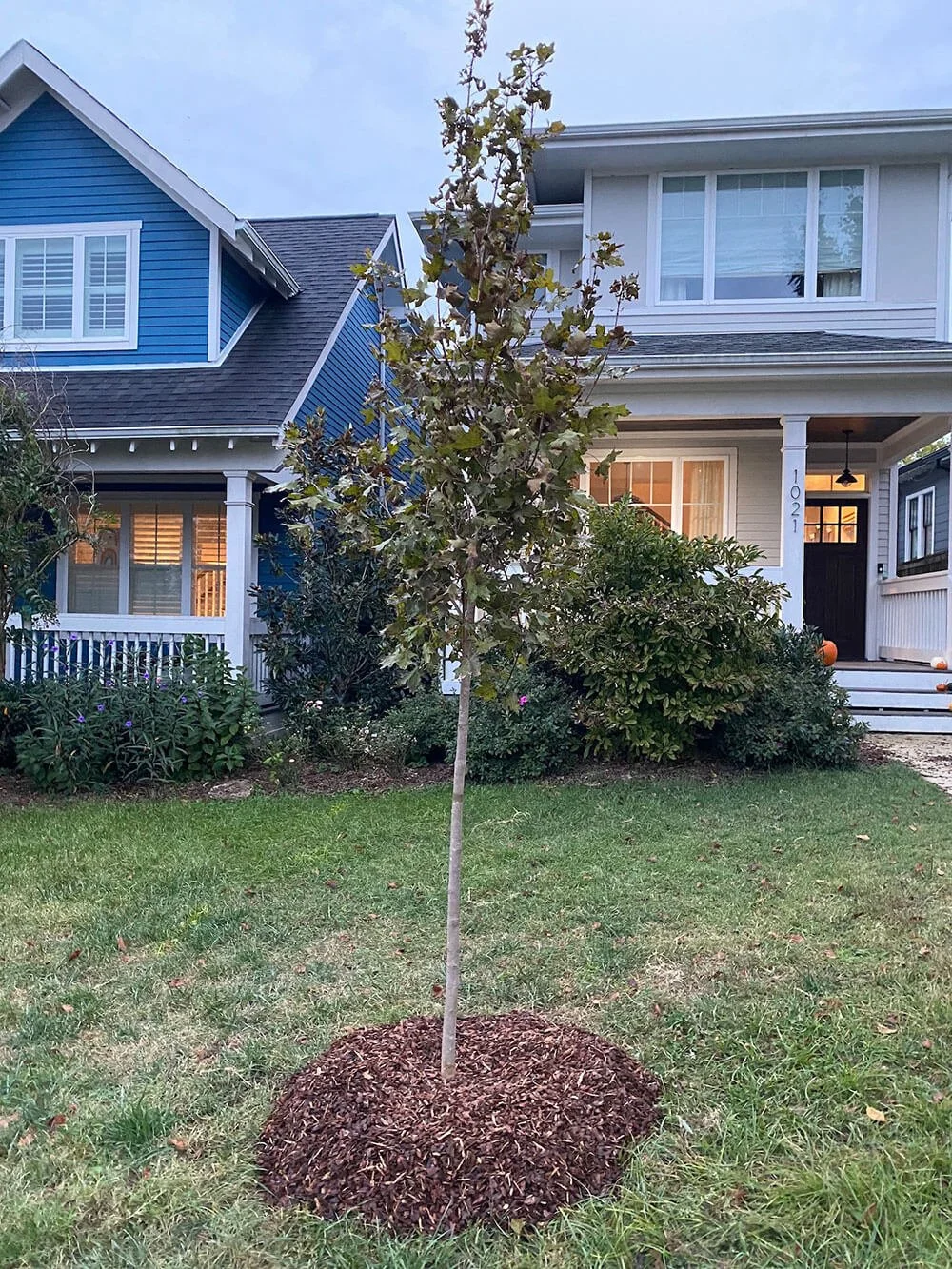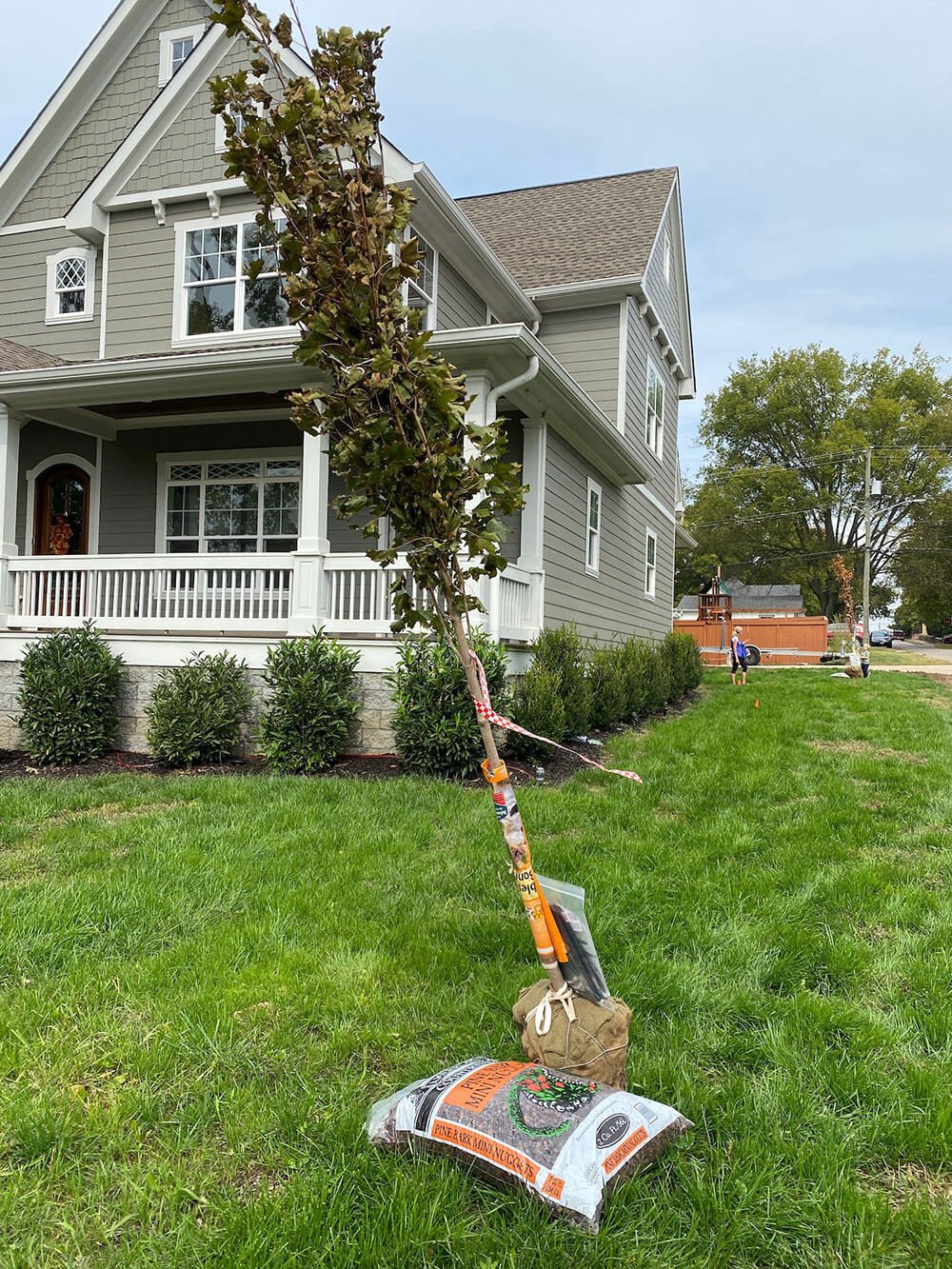Sleep, Creep, Leap: Stages of Growth in Newly Planted Trees
What to Know About Newly Planted Trees
How Saplings Settle In
If you’ve purchased a new tree recently from our 5th Annual Tree Sale, you might be wondering what to expect in terms of growth. For the first couple of years a sapling is in the ground, it will grow slowly. To our eyes, it might seem that very little is happening, but below ground the trees’ roots are working their way into the soil. After about two years, the roots will be established and your tree will start to grow at a much more noticeable rate. There’s an adage about plant growth that could help you stay patient: the first year they sleep, the second year they creep, and the third year they leap.
Trees Are Perennials
Perennial plants are those that live for more than two years, and this group includes both woody and herbaceous plants. Woody plants like trees, shrubs and some vines remain standing over winter, even if they lose their leaves. Most herbaceous plants like flowers and grass die back in the winter, but their roots remain dormant below ground and the plants sprout again in the spring.
Perennials usually take a few growing seasons to fully establish themselves in place, and this rule of thumb will help you monitor your new tree over its first few years.
A maple tree from the NTCC tree sale just after planting in October 2020.
First Year: Sleep
The first year of a sapling’s life in a new location is dedicated to stretching out its roots as wide and deep as possible to soak up water and nutrients from the soil. Since the tree is using energy to establish its roots, it may not gain height over the first year, appearing to “sleep.”
Trees should be planted in fall or early winter so they can benefit from the wetter weather before going dormant in the depths of winter. A tree that has time to spread its roots before spring will be able to sprout leaves as the weather warms up and be capable of enduring the heat of summer.
The same maple tree in spring 2021 shows healthy leaves but not much change in height.
Second Year: Creep
After a year of establishing its roots and having a cycle of leaf production, the tree will be able to give more energy toward growing its above-ground portion. It will still give attention to growing its roots, but some energy can be spared for the trunk and branches. This slow growth is the “creep.”
If you've planted a new tree this fall, remember to be patient as the sapling establishes its root system.
Third Year: Leap
After a couple of years of root extension, the tree will be able to absorb more water and nutrients from the ground to fuel growth of its upper body. This will allow the tree to grow more leaves, and a cycle of growth gets under way. Once the tree “leaps” in height, it will grow at a certain rate per year (between inches and feet annually, depending on the species) until it reaches a mature size.
Caring for Your New Tree
When a tree is moved and replanted, it requires a period of adjustment to grow its roots out in the new location. Make sure the tree gets enough water (but not too much), that the soil is aerated before putting the sapling in the ground, and that mulch isn’t piled around the trunk too deeply. Those first years of slow growth are critical for a tree to settle in place firmly. With a little patience and regular care, you’ll be able to raise your new sapling to maturity.
Check out the trees available this season through the NTCC Tree Sale, and fill out some vertical space in your yard. To stay updated on tree growing strategies and news about Nashville’s canopy, sign up for our email newsletter!



